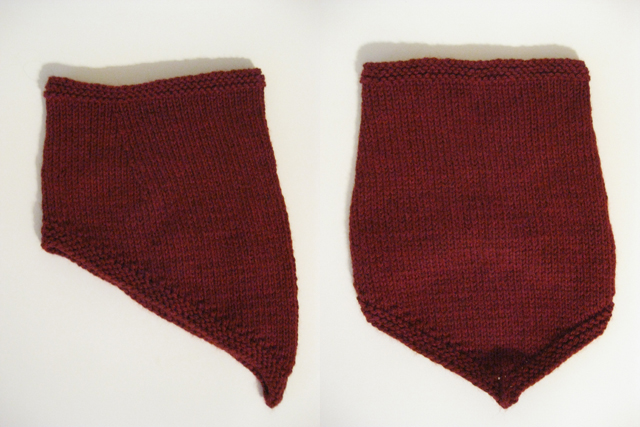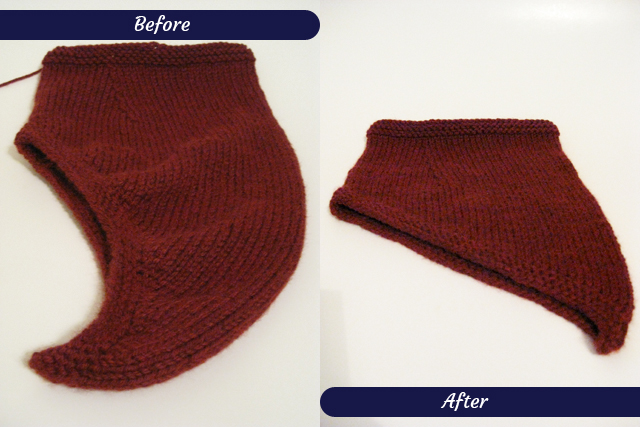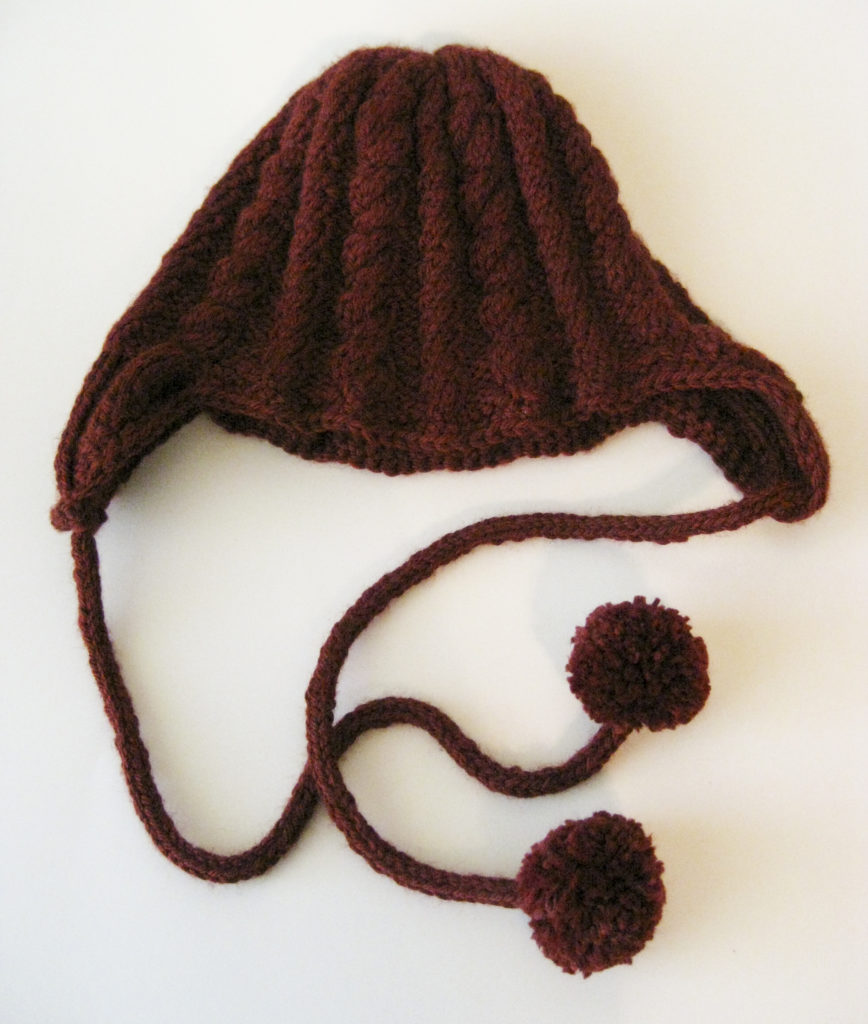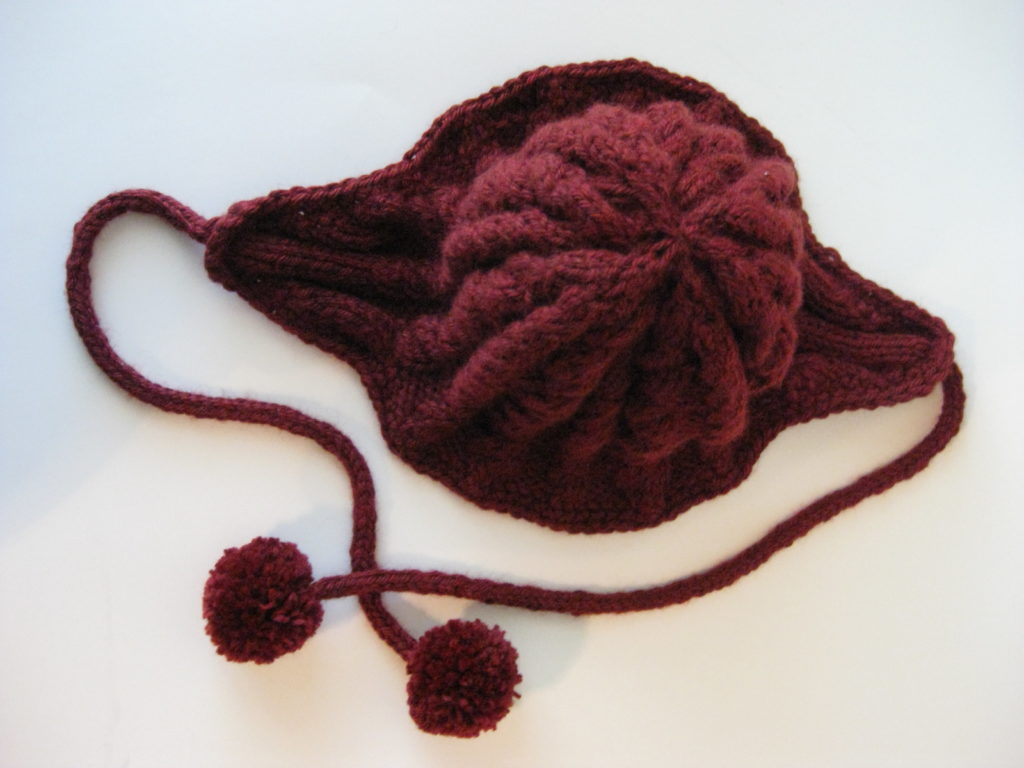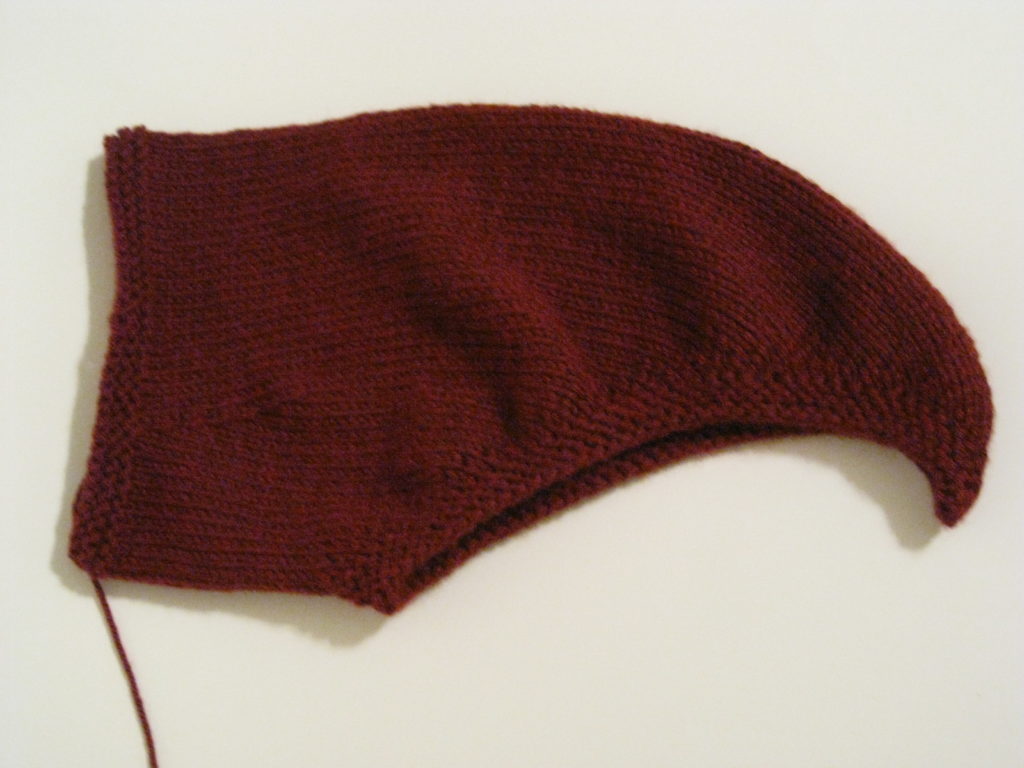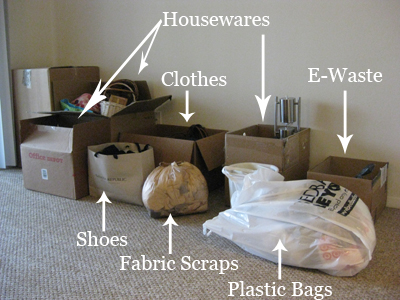Once I discovered what went wrong with my original Purl Soho Bandana Cowl, it wasn’t difficult to fix: I ripped everything out, cast on, and followed the instructions for the short rows to the letter. I also corrected a mistake I’d made while knitting the decreases toward the top of the piece that allow it to snuggle up against the chin. It only took two days to re-work the whole thing. The result is a finished cowl that looks exactly like the picture on the tin.
Pattern: Purl Soho Bandana Cowl
Yarn: Berroco® Vintage® Chunky, 6181 Black Cherry
Since my yarn lacks the alpaca content of the original sample, it’s not quite as slouchy. It also seems like it’s not quite deep and wide enough, but I chalk that up to personal preference. In any case, it looks miles better than the first iteration. Here’s a little before-and-after action to really highlight the difference the short row changes makes. (The angle’s not the same, but you get the idea.)
So why, if everything came out so much better, am I calling this a conspiracy? Well, yesterday I was looking at the yarn I still had left after knitting the earflap hat and this cowl. I’d seriously overbought on the yarn, but I’d had it too long to return it. I’m unlikely to buy this yarn base again, so I was determined to use up every little bit now rather than have it linger in my stash (I don’t like to stash anything I don’t have plans for). I’d barely dipped into the third and last skein, so I figured I had enough leftover for a hat. Nothing fancy, just a simple watch cap with a deep band of 1×1 rib I could fold up for extra wind protection and a body of 3×1 rib for interest.
After knitting the band during a series of car rides, I came home, took one look at the dwindling ball, and realized that if I kept going I’d end up in a game of yarn chicken that I couldn’t possibly win. I felt my heart sink a little. What to do? I definitely don’t want to buy any more of this yarn, and I don’t have any more bulky to mix it up with.
I let the matter rest overnight, and this morning I came to the obvious conclusion: I’d have to frog again. Not just the hat, but probably the cowl too. Of course, that would send me right back to the question of what to knit with almost two whole skeins of this yarn. So much frogging seemed like a sign.
Then it hit me: the yarn is rebelling. Clearly, it disapproves of my selfish desire to use up the leftovers on myself. (I don’t blame it, as I’m not sure I’ve really given it much love. It’s not the most sumptuous yarn I have to hand—that would be the Tanis Fiber Arts Yellow Label DK I’m using for my current sweater). I think what it wants is to be reunited with its sister skein, where it will be properly appreciated.
The way forward is clear. I’m off to do a bit more selfless knitting. There’s snow falling here, which certainly lends itself to an evening on the couch with a cocoa and the big squishy knitting project I’ve got planned now. I won’t get a snow day tomorrow unless we lose power, but there’s a good chance I’ll be working from home. If it’s snowing where you are, I hope you’re safe and warm and have a hot beverage nearby.

